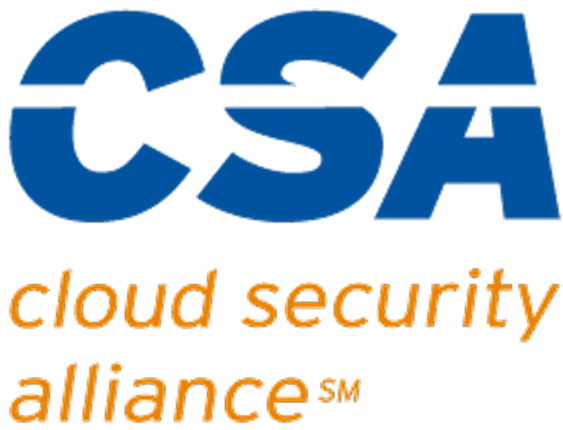Introduction
If you’re having trouble getting your computer to recognize a device connected via USB, don’t worry – you’re not alone. This can be a frustrating problem to solve, but fortunately, there are a few things you can do to try and fix it. In this blog post, we’ll discuss why your computer might not be recognizing devices connected via USB and some possible solutions. Read on for more information!
Troubleshooting USB device issues in Windows
Try the following steps to fix the issue of a USB device not being recognized by Windows. This starts with the most obvious and easiest things to try and ends with some “if all else fails” steps. Work through them in order, though we recommend starting with “Update your OS” if your Windows has not been updated in a while:
- Bypass physical hub (connect directly to PC)
- Try a different cable or USB port
- Check the device on another computer
- Disconnect other USB devices
- Disconnect, reboot, reconnect
- Hard power cycle
- Update your OS
- Update / reinstall USB device drivers
- Change power management for USB root hub
- Update Generic USB Hub
- Reinstall USB controller(s)
Bypass physical hub (connect directly to PC)
One of the first things you should try if your computer is not recognizing a USB device is to connect the device directly to the computer, bypassing any physical hubs. Do this even if you have other devices connected to your computer through a physical hub and working correctly. While it’s not common, some USB devices will not work well with an external USB hub. If the device works when connected directly, there may be an issue with the hub.
Try a different cable or USB port
The next thing you should try is using a different cable or connecting to a different USB port on your computer. Sometimes, cables can become damaged or loose, which can cause problems with connectivity. If you have another cable that you can try, see if that makes a difference. Additionally, some USB ports on a computer can become damaged or stop working correctly over time. If you have another USB port that you can use, give that a try.
Check the device on another computer
If you have access to another computer, try connecting the USB device to that computer. This is essentially a “proof of life” check to verify that your device is working. If the other computer can recognize the device, then the issue is most likely with your computer and not with the device itself.
Disconnect other USB devices from your computer
If your computer can recognize some USB devices but not others, there may be a conflict between the devices. To see if this is the case, try disconnecting all other USB devices from your computer (except for the one you’re having trouble with) and then try connecting it again. If your computer now recognizes the new device and you’ve verified that it’s working correctly, try reconnecting the other devices, one at a time. See if any of them affect the recognition or operation of your new device.
Disconnect, reboot, reconnect
One troubleshooting step that’s always worth trying is disconnecting the USB device, rebooting your computer, and then reconnecting the device. This can sometimes “reset” things and get everything working correctly again. It’s essential to do the steps in the indicated order and let your computer fully boot up and settle in before reconnecting the USB device
Hard power cycle
Sometimes a reboot isn’t enough to fix the issue – you may need to do a hard power cycle. Unplug your computer from the power outlet (or surge protector) and leave it unplugged for at least 30 seconds. This will fully discharge any residual power in the system and clear out any potential issues causing problems with USB recognition. After 30 seconds have passed, plug your computer back in and turn it on. For good measure, go ahead disconnect your USB device, do the hard power cycle, then reconnect the USB device once your computer is fully booted and settled.
Some USB devices, such as external hard drives, have their own power supply that plugs into the wall. If yours is of that type, hard power cycle it as well while you are doing this step.
Update your OS
In reality, ensuring that your OS is up to date should be the first step in this guide, but given how long an update can take, we decided to suggest a few quick things first. Outdated drivers can sometimes cause problems, so it’s crucial to ensure that everything is up to date before moving on to other troubleshooting steps. To check for updates on a Windows computer, open the Start menu and search for “Updates,” then click on “Check for Updates.” Download and install any updates that are listed under “Updates Available.”
Update / reinstall USB device drivers
If your OS is up to date but still not recognizing your USB device, there may be a problem with the device drivers. To check if this is the case:
- Open the Device Manager (you can search for “Device Manager” in the Start menu).
- Find your USB device in the list of devices and right-click on it.
- Select “Update Driver” from the context menu and follow any prompts.
If that doesn’t work, or if no updates for the driver are found, you can try uninstalling and then reinstalling the drivers. Right-click on the device in Device Manager and select “Uninstall” from the context menu. Once the drivers have been uninstalled, restart your computer with your USB device connected, and they should be reinstalled automatically.
If your computer does not reinstall the driver(s) for your USB device, locate and download the driver for your device from the manufacturer’s website, reboot your computer if required after installation, then check to see if the device is recognized.
Change power management settings for the USB root hub
Another potential cause for USB recognition issues is power management settings for the USB root hub. To check and change these settings:
- Open the Device Manager and expand the “Universal Serial Bus Controllers” section.
- Find the “USB Root Hub item,” right-click on it, and select “Properties” from the context menu.
- In the properties window, click on the “Power Management” tab.
- If there’s a checkmark next to “Allow the computer to turn off this device to save power,” uncheck it and click “OK.”
Repeat these steps for each USB Root Hub listed in Device Manager.
After making these changes, restart your computer and try connecting your USB device again.
Update driver for the Generic USB Hub
Open Device Manager and expand the “Universal Serial Bus Controllers” section. Find one or more items labeled “Generic USB Hub,” right-click on them, and select “Update Driver” from the context menu. Follow any prompts that appear to install the updated driver.
If you choose “Search automatically” when prompted and get a message that the latest driver is already installed, repeat the update process but select “Browse my computer for driver software” instead. When prompted for the driver’s location, click “Let me pick from a list” and select the Generic USB hub driver that is displayed in the next window.
After updating the driver, restart your computer and try connecting your USB device again.
Reinstall USB controller(s)
If you’re still having issues with your USB device, there may be a problem with the USB controller(s). You can try reinstalling them to see if that fixes the issue. To do this, open Device Manager, expand the “Universal Serial Bus Controllers” section, and right-click on each item listed. Select “Uninstall” from the context menu and follow any prompts. Once all USB controllers have been uninstalled, restart your computer, and they should be automatically reinstalled. Try connecting your USB device again to see if it’s recognized.
Troubleshooting USB devices on a Mac
The process for troubleshooting USB devices on a Mac is similar to the process on a Windows PC – it mainly differs in the steps required when working with the OS. So being your troubleshooting by:
- moving the device connection to a different port
- trying the device on another Mac computer (if you have access to one)
- bypassing your external hub if you have one
- using a different cable
- disconnect, reboot, reconnect
- hard power cycle
- try with no other USB devices connected to your computer
If none of those steps help, try the following:
- Restart your Mac with the USB device plugged in
- Verify that the device is compatible with Mac computers
- Verify software/driver installation
- Verify that the device appears in System Information
- Update software/drivers
- Check USB controller(s)
- Reset USB ports
- Reset the System Management Controller (SMC)
- Test USB port with another device
Restart your Mac with the USB device plugged in
If you have not already tried it, reboot your Mac with the USB device connected. Sometimes this is all that’s necessary to get a stubborn device to work. If the reboot doesn’t work, try restarting your Mac in Safe Mode and connecting the USB device. This will prevent any third-party software from loading and interfering with the connection. If you’re still having issues, it’s time to move on to some more advanced troubleshooting steps.
Verify that the device is compatible with Mac computers
Before further troubleshooting steps, make sure that the USB device you’re trying to connect is compatible with Mac computers. Many USB devices – like flash drives and external hard drives – are designed to work with both Windows and Mac computers, but some devices – like printers and scanners – may only be compatible with Windows. Check the manufacturer’s website and any forums related to the product to determine if there are any known incompatibilities.
Verify software/driver installation
If the USB device you’re trying to connect is compatible with Mac computers but isn’t working, you should make sure that any required software or drivers are installed. While many Mac peripherals are intended to be “plug and play,” some devices – especially printers and scanners – require special software to be installed to work correctly. Once again, check the manufacturer’s website and forums to see if there are any specific instructions or known issues with installing the required software/drivers on a Mac.
Verify that the device appears in System Information
If the required software is installed and you’re still having issues, open “About This Mac” on the Apple menu, then click the “System Report” button to open the report window. See if the USB device is listed below “Hardware” in the list on the left. If you see your device in the list, it is recognized by your Mac, and you should refer to the manufacturer’s documentation for troubleshooting steps. If it’s not listed, you should retry software/driver installation.
Update software/drivers
If your USB device appears in System Information, but you’re still having issues, the software or drivers may be outdated. Depending upon the device, you will update software and drivers by using Update macOS, the App Store, or manually downloading and installing from the manufacturer’s website. Again, check the manufacturer’s website and forums for any known issues and follow their instructions for updating the software or drivers.
Check USB controller(s)
Even if the device appears in System Information, there may be an issue with the USB controller itself. To check this, open System Information (also known as System Profiler) and look for any entries related to “USB” in the list on the left. If you see any entries with a yellow warning sign next to them, there’s possibly an issue with the USB controller, and you should contact Apple Support for further assistance.
Reset USB ports
If you don’t see any entries related to USB in System Profiler or there are no yellow warning signs, the next step is to reset your computer’s USB ports. One way to do this is a hard power cycle of your Mac, but since you (should have) already tried that, you can instead do a soft reset as follows:
- Go to Applications → Utilities → Terminal to open a terminal window.
- Paste the command at the prompt: sudo kextunload IOUSBMassStorageClass.kext
- Press Enter/Return.
- Close the Terminal window.
Now try connecting your USB device again to see if your computer recognizes it.
Reset the System Management Controller (SMC)
If resetting the USB ports didn’t work, you can try resetting your computer’s System Management Controller (SMC). The SMC is responsible for managing various functions on your Mac, including power, batteries, fans, and lights. To reset the SMC:
- Shut down your computer.
- Disconnect the power cord and any other cables connected to your computer.
- Press and hold the power button on your computer for at least 5 seconds, then release it (on a MacBook, do this instead: press the left Shift + Control + Option keys and hold them for 7 seconds, then add the Power button to the combination and hold for a further 7 seconds)
- Reconnect the power cord and any other cables, then turn on your computer.
Once you’ve reset the SMC, try connecting your USB device again to see if your computer recognizes it.
Test USB port with another device
While most modern computers and laptops have two or more USB ports, a few Mac devices, like the 12-inch Macbook, have just one. If you’ve tried all of the above steps and your computer still isn’t recognizing a USB device, there may be an issue with the USB port on your computer. The best way to test this is to connect another USB device (preferably one that you know works) to the same port and see if it is recognized. If the other device is identified, you know that the port is working, and the issue is with the original USB device. If the other device isn’t recognized, you know there may be an issue with the USB port, and you should contact Apple Support for further assistance.
Conclusion
We hope that this article has helped troubleshoot why your computer won’t recognize a device connected by USB. If you’ve tried all of the steps above and are still having issues, we recommend contacting your support resource for further assistance. Thanks for reading!




